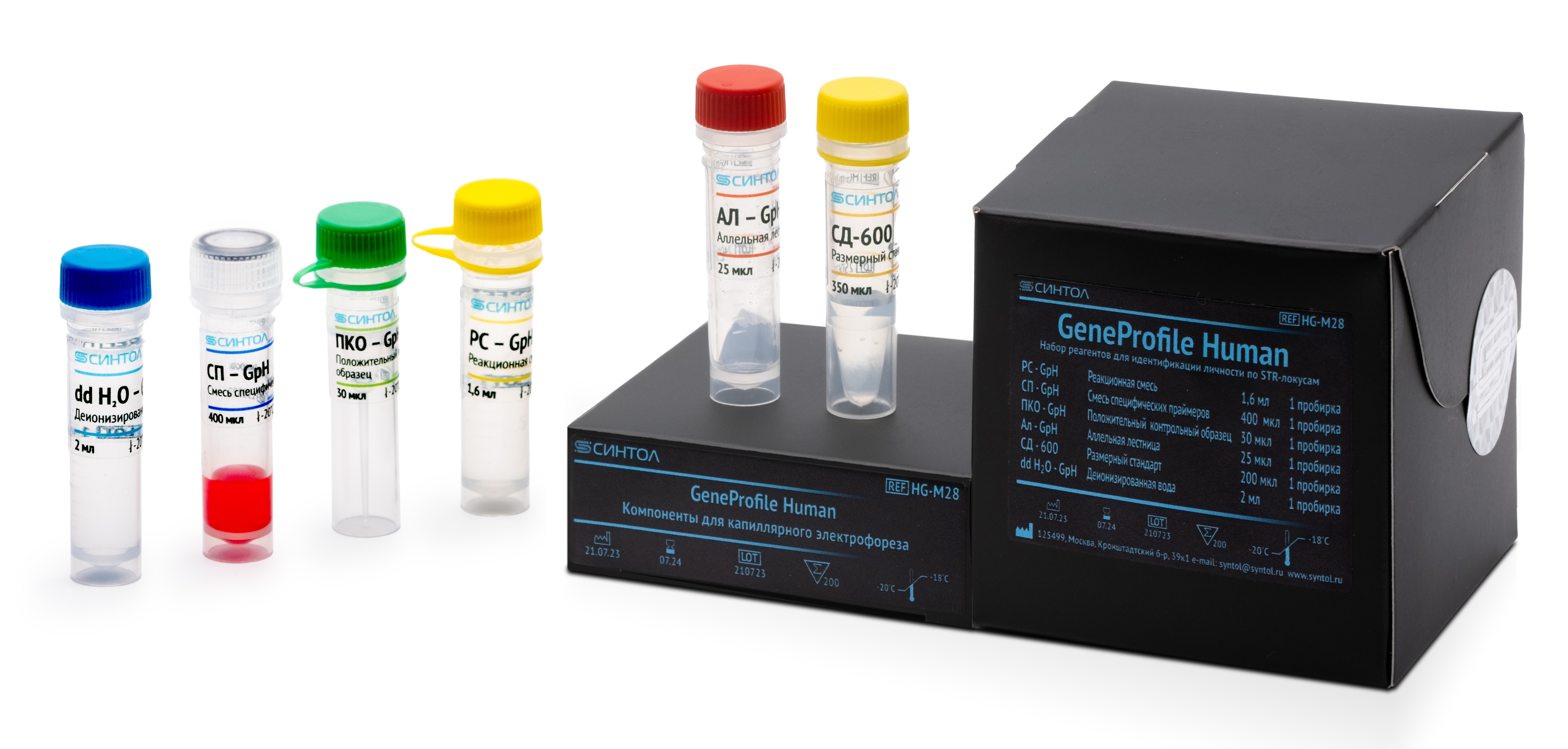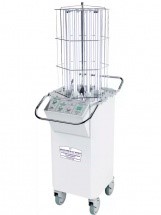Catalog
Search
3 products
View:
3 products

«Gene Profile Human» reagent kit for personal identification using 28 STR loci
from
68 000 ₽
The kit is based on multiplex amplification of 28 STR loci followed by separation of PCR products by capillary electrophoresis. Of these, 25 autosomal loci: D3S1358, D2S441, D1S1656, D19S433, TPOX, D2S1338, TH01, D16S539, CSF1PO, D18S51, D21S11, D22S1045, D8S1179, VWA, D5S818, FGA, D13S31 7, D7S820, D12S391, D10S1248, SE33, DYS391, D8S1132, D7S1517, Penta D, Penta E and 3 sex loci: Amelogenin, Yindel, DYS391. The STR loci presented in the set are highly polymorphic, which allows for reliable identification of a person. The set includes all loci from the CODIS (Combined DNA Index System) and ESS (European Standard Set) databases, as well as loci SE33, Penta D, Penta E. To obtain the complete (for all 28 STR loci) genotype of the test sample, 0.125 nanograms (ng) of non-degraded DNA is sufficient. The optimal amount of DNA introduced into the reaction is 1 ng. The range of DNA concentrations for amplification is from 0.1 to 4 ng per reaction.
SYNTOL
Москва
Produced in: Moscow

Genta ExoGen master mix, 500 reactions
ExoGen is a ready-to-use mixture of Genta-ExoI exonuclease I enzymes and the thermolabile alkaline phosphatase Genta-ALP in a reaction buffer. ExoGen mixture is used for enzymatic hydrolysis of an excessive amount of primers and nucleotides in PCR products (amplicons).
The PCR products purified in this way are suitable for further use in various biological applications, such as cloning and DNA sequencing.
Genterra
Moscow
Produced in: Moscow

Fluorescently labeled probes and samples
from
5 070 ₽
Fluorescent probes are an oligonucleotide with a fluorescent label and a suppressor that can bind to the DNA chain during amplification. When the probe is in a free state, both dyes are located close to each other, therefore, fluorescence quenching occurs. During PCR, at the stage of chain elongation, the hybridized probe is cleaved by a polymerase that has 5’-exonuclease activity, the dyes are separated, and a fluorescent signal proportional to the amount of the amplified product is observed. The fluorescence intensity increases in each cycle in proportion to the probe splitting rate. The use of probes in PCR makes it possible to increase the accuracy and selectivity of the reaction.
A wide range of fluorescent dyes: FAM, R6G, VIC, HEX, JOE, TAMRA, ROX, Cy 5 and Cy5.5
The possibility of multiplex analysis of multiple DNA targets in one test tube.
High efficiency of PCR-RV.
Probe quality control: HPLC purification and mass spectrometry verification
Genterra
Moscow
Produced in: Moscow
